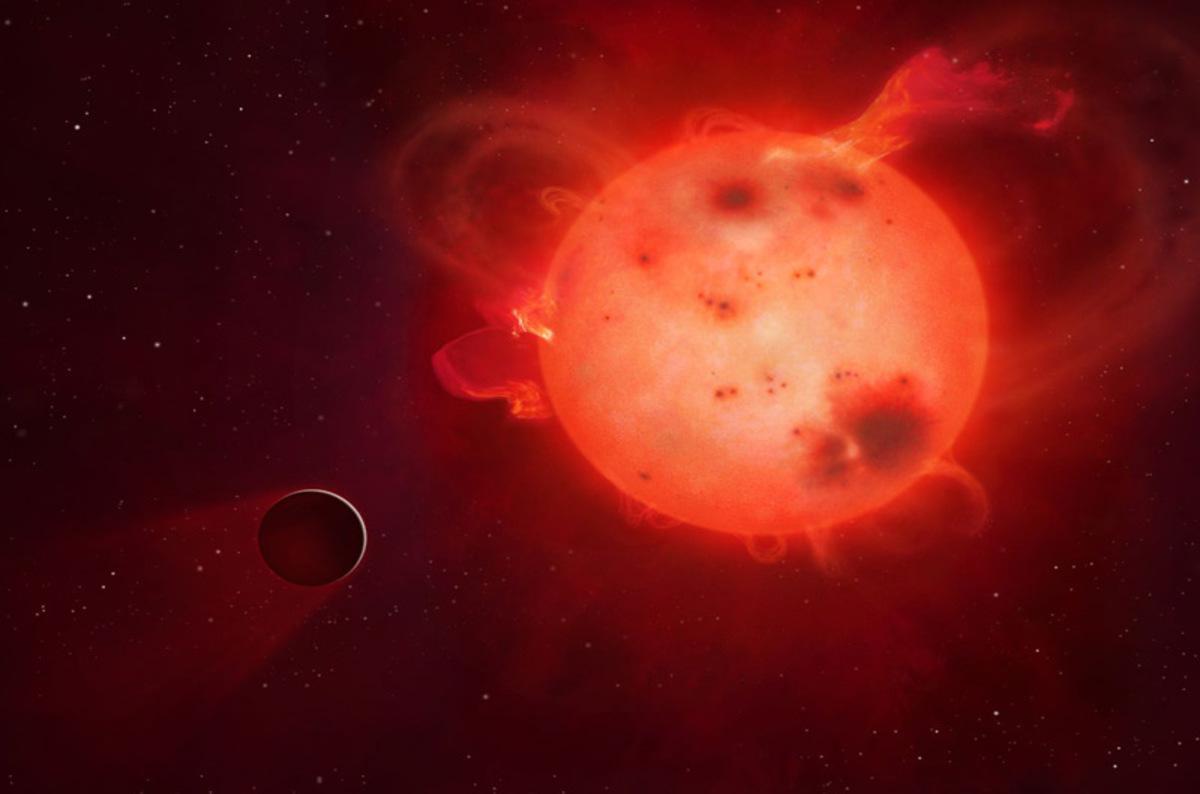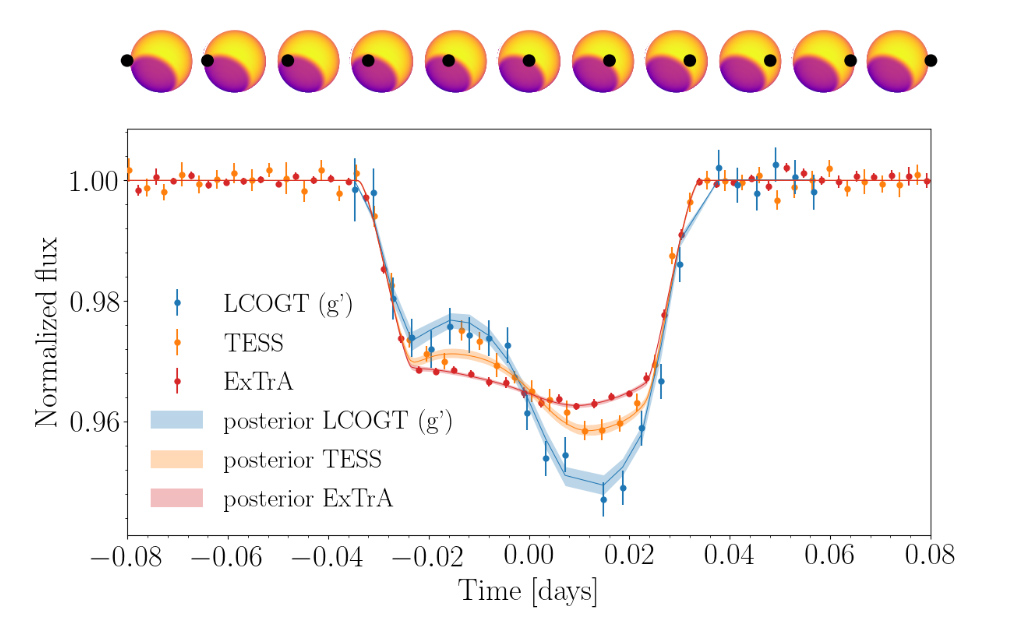A team of European researchers reported the discovery of a previously unknown gas giant. The discovery is interesting because the exoplanet orbits a star with a giant polar spot.
Planet without analogues in the Solar system
The discovery was made as a result of analyzing data collected using the TESS space telescope, which detected periodic decreases in the brightness of the star TOI-3884. It is a red dwarf located 140 light-years from Earth. By its size and mass, the star is about 3.5 times smaller than the Sun.

The changes in the brightness of TOI-3884 are caused by transits of an exoplanet which orbit passes at a distance of 0.035 AU (5.2 million km). Its effective surface temperature is 90 °C. According to astronomers, the newly discovered exoplanet occupies an intermediate position between objects like Neptune and large gas giants. Its radius is 6 times, and its mass is 16.5 times higher than Earth’s. This means that the average density of the exoplanet is only 0.365 g/cm3 (that is, it is three times less than the density of water). There are no similar bodies in the Solar System.
Star with a giant spot
A curious detail of the find is the very unusual shape of the graph of the change in the brightness of the red dwarf at the time of transits. As a rule, it has a symmetrical shape. However, this is not the case with TOI-3884. On the graph published by the researchers, an unusual peak can be identified, which is then accompanied by a deep dip.

Such an asymmetry can be caused by various reasons, for example, the presence of rings or a large moon on an exoplanet. However, in this case, astronomers believe that it’s all about the star itself. During the simulation, they came to the conclusion that TOI-3884 is covered with a large number of spots near the poles, which in total occupy about 17% of the total surface of the star.
It is worth noting that red dwarfs in general differ in a very violent “temper”. Due to the fact that their surface is often covered with numerous spots, their luminosity can vary markedly. Also, such stars can produce flares that are way greater than the most powerful solar storms. Because of this circumstance, the possibility of the formation of life in red dwarf systems has been a long-standing subject of scientific debate among astronomers.
According to https://arxiv.org
Follow us on Twitter to get the most interesting space news in time
https://twitter.com/ust_magazine

